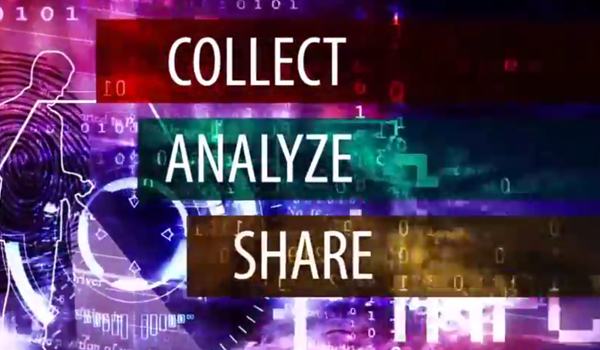Evidence management in the digital age
Crowdsourcing is a modern business term supposedly coined in 2005, and is defined as the process of getting work or funding, usually online, from a crowd of people. The word is a combination of the words crowd and outsourcing the idea is to take work and outsource it to a crowd of workers.
Crowdsourcing is a modern business term supposedly coined in 2005, and is defined as the process of getting work or funding, usually online, from a crowd of people. The word is a combination of the words crowd and outsourcing the idea is to take work and outsource it to a crowd of workers.
Put simply, it means engaging with the masses in order to get whatever it is you need, explained Jamie Wilson, who is responsible for public safety marketing for NICE Systems throughout EMEA. It was born out of the digital age and some police forces around the world have been quick to embrace it as a method to aid in their criminal investigations.
The term may be new but the concept is far from alien to UK forces, all of which are highly skilled at engaging the media to reach out to the public for information and evidence, said Mr Wilson.
In fact, go back to 1962 when Shaw Taylor hosted the weekly five-minute show Police 5, or 1984 when the first ever episode of CrimeWatch UK was aired on the BBC. Televised appeals would attempt to jog the memory of a passer-by who may have noticed something relevant to the investigation. For investigations on a massive scale, managing crowdsourced information can be challenging, but trawling through the mass of data to find whats relevant to the case, and putting it in proper context, can be equally difficult, he explained in his public safety blog.
In the aftermath of the Boston Marathon bombing on April 15, 2013, law enforcement put out a call for marathon-goers to send in photos and videos taken in the moments leading up to the attack. It was this information, coupled with CCTV footage that led to the identification of the Tsarnaev brothers as the culprits.
However, it took the FBI and hundreds of detectives, working around the clock to process the enormous volume of evidence and bring closure to the investigation. It was a similar story two years earlier in London, following the riots of 2011. The subsequent investigation process involved 500 officers trawling through more than 200,000 hours of CCTV footage.
Today, most law enforcement agencies do not have a good way to crowdsource information, explained Mr Wilson.
For example, after the Boston bombing, citizens sent in more than 13,000 photos and videos which crashed the departments email server, he said.
New solutions, like NICE Investigate, address this by enabling police forces to create secure portals through which citizens can provide videos, photos and tips. Businesses can also register their CCTV cameras and provide contact details.
Another challenge facing investigators is the requirement to log onto many standalone systems sometimes more than a dozen to first find, then extract, other pieces of relevant evidence. Its a time-consuming and inefficient process, said Mr Wilson. After its retrieved, all of the evidence then needs to be painstakingly copied and saved onto CDs, DVDs, or USB drives, and added to a paper case folder.
These, too, are problems that are easily solved. Using a powerful Google-like search tool, investigators can conduct a single search across all connected data sources to uncover evidence from 999 and radio recordings, CAD (computer-aided dispatch) systems, RMS (records management systems), body-worn video (BWV) cameras, CCTV cameras, ANPR (automatic numberplate recognition), in-car video as well as interviews, physical evidence, photos, documents, information from digital devices, social media and other publicly-available content. Then, all the investigator needs to do is review the suggested evidence, and select it to add it to a virtual case folder.
Advanced content analytics even make audio and video files, documents, incident narratives and case reports from CAD and RMS systems searchable, said Mr Wilson.
For example, a witness in an assault investigation said they saw a Ford Transit van with Joes Plumbing written on the side, fleeing the scene. By adding Joes Plumbing to a keyword search, all connected sources from incident rep




